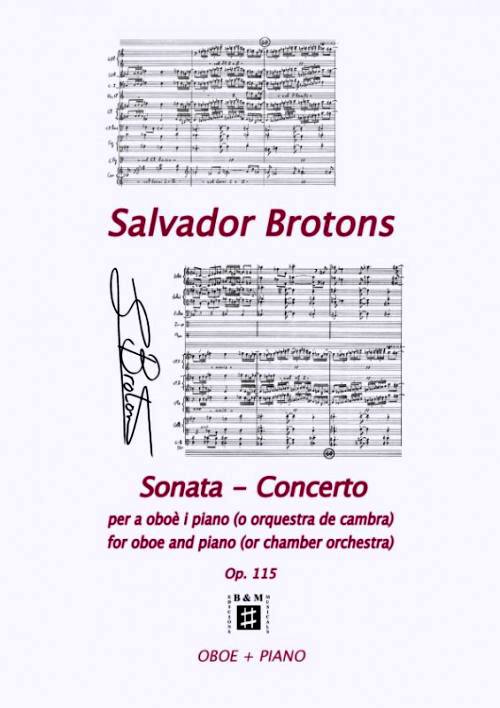Description
Author
Format
Instrumentation
Duration
Pages
Year of composition
ISMN
Ref.
Seduced by the lyrical and expressive beauty of the oboe, and because of my special preference for the Sonata genre for instrument and piano, I started to compose this sonata, by request of the young and exceptional oboe player Pilar del Bosque, during the month of December, 2009. Along with this petition, the group Enigma from Zaragoza and its conductor, Juan José Olives, commissioned me to write a piece for chamber orchestra. Linking the two projects, I designed a piece that could be a Sonata and a Concerto at the same time. Thus, when I wrote the piano part, I already had in my mind the orchestration of the piece.
The piece is conceived in three movements which can also be performed as three separate pieces: Overture, Berceuse and Tarantella. The overture follows a big Sonata form with all its thematic structure. Without being an atonal piece, it does not follow any traditional tonal plan in its sections: Exposition, Development and Re-exposition. At an Allegro tempo, the soloist maintains a varied dialogue with the accompaniment which, as in all my sonatas, often acquires a prominent role. A culminating point is achieved towards the end of the Development as well as in the brilliant Coda.
The Berceuse is a very lyrical and expressive piece with a touch of melancholy, in which the oboe sings in all its registers, from the dark lower to the sweet higher register.
The Tarantella, as its title points out, is a rapid, fun dance where the soloist displays his/her virtuoso abilities in the first theme, and the expressive qualities in the second theme. Before the Cadenza, and in order to let the soloist rest, the piano (or orchestra) opens up an ample space of tension in the form of an interlude.
A shorter and modified re-exposition of the two combined themes leads to a thrilling end.

















There are no reviews yet.